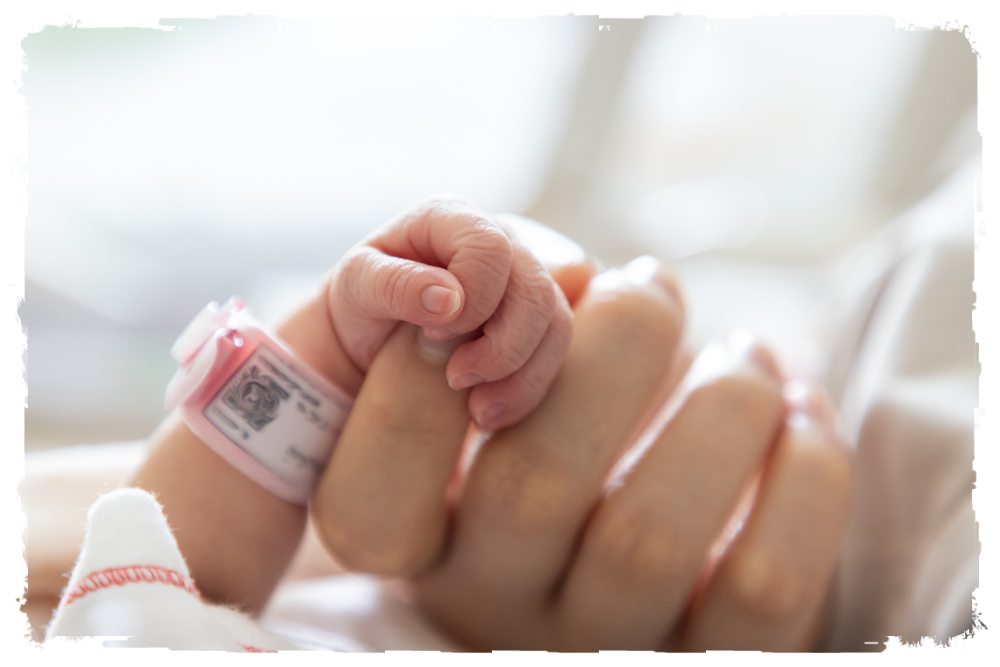WORDS LIM TECK CHOON
 FEATURED EXPERT FEATURED EXPERTDATIN DR VIJAYALETCHUMI THANDAYATHANY Consultant Obstetrician & Gynecologist and Maternal Foetal Medicine Consultant Columbia Asia Hospital—Seremban |
Every year in Malaysia, over 60,000 babies make their entrance into the world earlier than expected.
While this statistic might sound alarming, consultant obstetrician and gynaecologist Datin Dr Vijayaletchumi Thandayathany says that there is hope.
“Some reasons for preterm birth can be prevented with the right knowledge and care,” she tells us.
UNDERSTANDING PRETERM BIRTH
- Preterm birth can occur between the 22nd and 37th week of pregnancy, affecting approximately 12.3% of births in Malaysia.
- It’s not just a minor inconvenience; it’s actually the second leading cause of death in children under five.
- The earlier a baby arrives, the higher the risks. Those born extremely preterm (born on the 28th week or earlier) who survive often face long-term neurodevelopmental challenges.
- “Prevention of extremely preterm of should be the ultimate goal as the morbidity in this group is the highest,” says Datin Dr Vijayaletchumi.
| When we say that extremely preterm babies have the highest morbidity, what this means is that these babies are at a much higher risk of health complications. These complications could include lung issues, infections, problems with brain development, and more. |
WHAT ARE THE RISK FACTORS THAT CAN CAUSE A BABY TO BE BORN PREMATURELY?
According to Datin Dr Vijayaletchumi, several factors can increase a woman’s chances of experiencing preterm delivery.
Medical Conditions
These play a significant role, accounting for 20% of preterm deliveries.
Common conditions linked to preterm birth include:
- High blood pressure that can lead to severe pre-eclampsia
- Poorly controlled diabetes
- Connective tissue diseases
- Recurring urinary tract and vaginal infections
Additionally, twin pregnancies could be a risk factor.
“With the increment of fertility treatment in our country, we do have more mothers pregnant with twins and this is another factor for preterm birth,” says Datin Dr Vijayaletchumi.
| A woman is also considered high-risk if she has a history of spontaneous preterm births, has undergone prophylactic cervical cerclage in the past, and has abnormalities in the shape and structure of her womb. |
Lifestyle Choices
Smoking
- This includes passive smoking or inhalation of cigarette smoke.
- “It is postulated that nicotine in the cigarettes can cause the narrowing or constriction of the blood vessels,” Datin Dr Vijayaletchumi explains further.
- “This will reduce the oxygen supply to the foetus while increasing the levels of the carbon monoxide reaching the fetus,” she adds.
- Smoking cessation can reduce the risk by as much as 20%.
Weight
Both being underweight and obese can complicate matters, as both undernourished mothers and those carrying excess weight face higher risks due to weight-associated health conditions.
HOW TO MINIMIZE THE RISK OF PRETERM BIRTH
#1 Plan Early
- Don’t wait until you’re pregnant to start thinking about prevention.
- Datin Dr Vijayaletchumi emphasizes the importance of pre-pregnancy counselling with an obstetrician.
- Such counselling will allow you to optimize the management of existing medical conditions and adjust medications to safer alternatives before conception.
#2 Medical Interventions That Can Make a Difference
For high-risk cases, there are some proven solutions, such as:
- Progesterone supplements, which are available as tablets to be taken orally or inserts that can be placed in the vagina (progesterone vaginal).
- Cervical cerclage, a surgical procedure for women with multiple previous preterm births or cervical shortening. This surgery helps to keep a weakened cervix closed during pregnancy, thus preventing premature birth.
- Emergency rescue cervical cerclage in cases when the pregnant woman experiences cervical dilation or foetal membrane exposure.
| Like most surgeries, cervical cerclage carries some risks of complications such as bleeding, infection, and ironically, preterm labour. As such, your doctor will discuss with you and your partner thoroughly about the advantages and drawbacks of this surgery so that you can make an educated decision that will be best for you and the child you are carrying. |
#3 What You Can Do
- Keep up with your prenatal checkup appointments, as this will allow your obstetrician to monitor both your and your baby’s well-being.
- Maintaining a balanced and healthy lifestyle (diet and physical activity) is paramount for a healthy pregnancy.
ARE PRETERM BIRTH PREVENTION WORKSHOPS A GAME-CHANGER?
Want to take your prevention strategy to the next level?
Datin Dr Vijayaletchumi reveals that many hospitals hold specialized workshops that offer comprehensive support, covering:
- Healthy lifestyle guidelines
- Medical condition management
- Screening methods for preterm birth
- Early warning signs of preterm labor
- Importance of antenatal care
- Pregnancy-safe exercises
These workshops are led by a team of healthcare professionals including obstetricians, dieticians, physiotherapists, and midwives.
They provide both physical and emotional support. Unlike the potentially misleading information found on social media, these sessions offer expert guidance you can trust.
Who Should Consider Attending These Workshops?
- “All women planning for pregnancy are encouraged to join, not just pregnant mothers,” says Datin Dr Vijayaletchumi.
- Their partner should also attend.
THE BOTTOM LINE
- While the prospect of preterm birth might seem scary, Datin Dr Vijayaletchumi assures us that knowledge is power.
- By understanding the risks and taking proactive steps, many cases can be prevented.
“Don’t wait until it’s too late! Speak with your healthcare provider about your personal risk factors and prevention strategy today,” urges Datin Dr Vijayaletchumi.
She adds: “Remember: A healthy pregnancy journey isn’t just about the mother. Her partner should be actively involved in prevention education too. Together, the both of them can significantly improve the chances of carrying their precious baby to full term.”
This article is part of our series on tips and advice on having a safe and healthy pregnancy.
|














